- A question many growers ask themselves when configuring their indoor growing space is ‘what is the best equipment for marijuana growing?’
- One of the first things that come to mind is lighting, a key aspect for the proper development of plants.
- In this post, we will focus on two very different lighting methods, both of which are very popular among growers: sodium lamps (HPS) and CFL lamps.
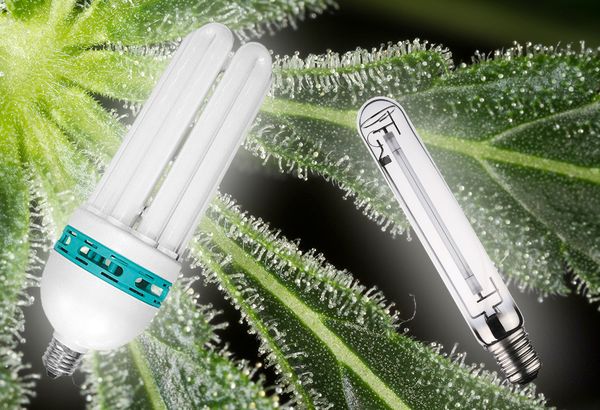
What is an HPS lamp?
HPS (High Pressure Sodium) lamps are discharge lamps that use sodium vapour to generate light. There are two types of sodium lamps, high-pressure sodium lamps - which emit yellow-orange light - and low-pressure sodium lights - which emit rather pale orange light.
Sodium lamps were developed in the early 20's by American physicist Arthur Compton, and in 1932 the Dutch company Philips and its German counterpart Osram produced the first models. Years later, in 1950, a major technological advance allowed to isolate the discharged tube with a vacuum envelope, making the lamp more reliable and resistant.
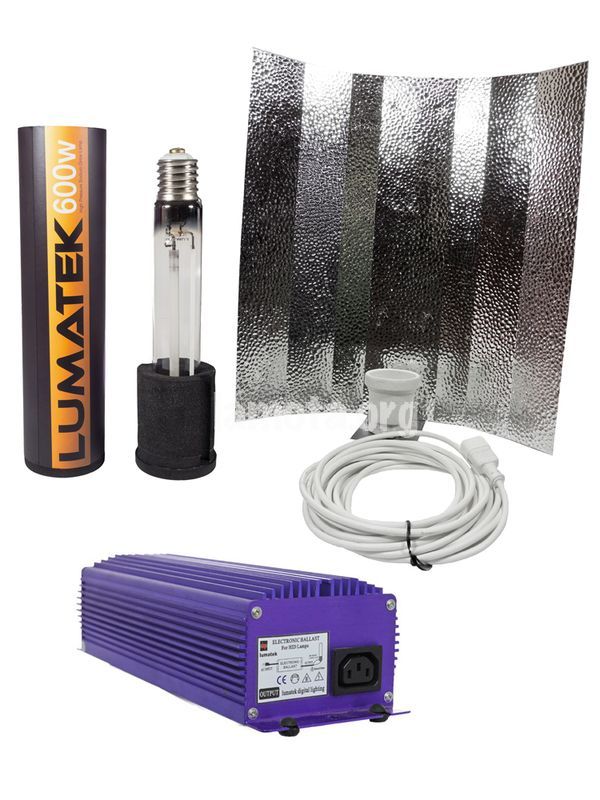
When it comes to marijuana growing, you should look at high-pressure sodium lamps only, as low-pressure ones are not suitable for gardening.
High-pressure lamps were mass produced and first marketed in 1970, and by the 80's many countries restricted their use to roads and industrial sites, probably because their colour is not very pleasant to the human eye.
That said, this kind of lamp has been commonly used in gardening for years, particularly in Northern European countries like the Netherlands, were sunlight is week all year round. HPS lamps are highly appreciated for their deep red spectrum, necessary for the flowering period.
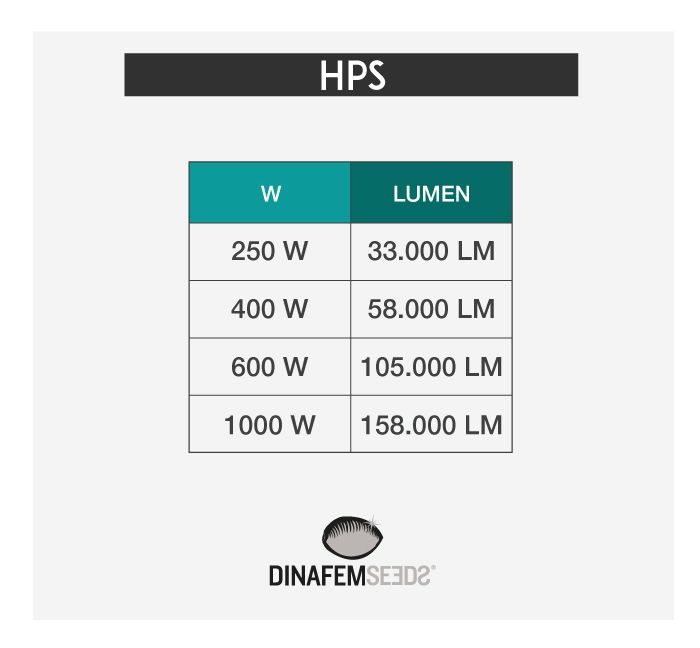
Despite the current technological revolution - spearheaded by LED lamps - HPS lamps remain the best option when it comes to growing marijuana, particularly during the flowering period, where they offer a performance unrivalled by any other lamp - in terms of production mainly.
Normally, they are available in 250W, 400W, 600W and 1000W. 250W and 400W models are suitable for the entire plant life cycle (vegetative and flowering stages) and a good alternative for the vegetative stage whenever CFL, MH and neon lamps cannot be used.
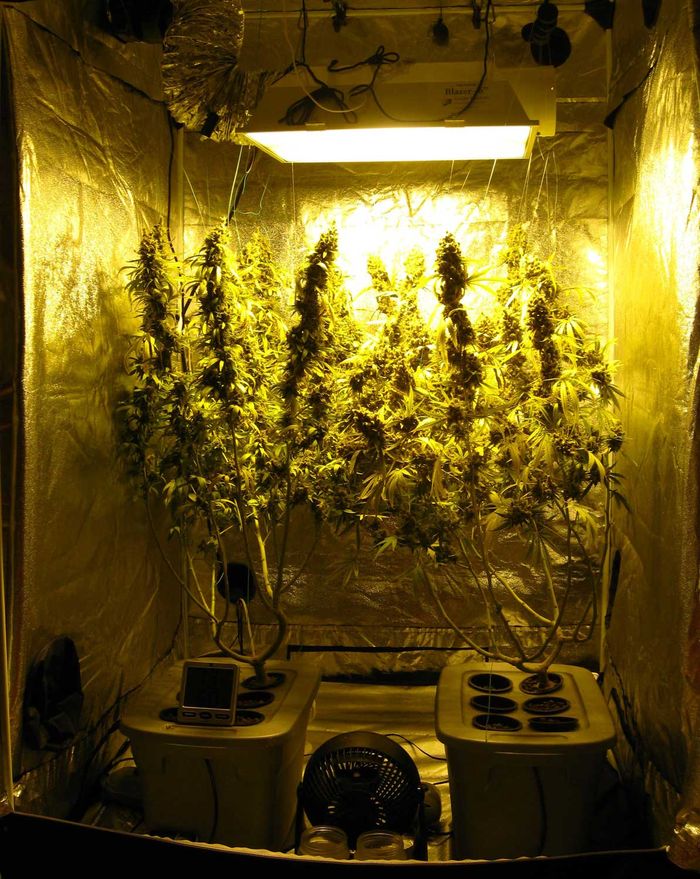
The best-selling lamps in Europe are 400W and 600W models, while 1000W models are more popular in the US and in Canada - 250W models are not much in demand. For optimum results, HPS lamps should be changed once a year or every four growing cycles.
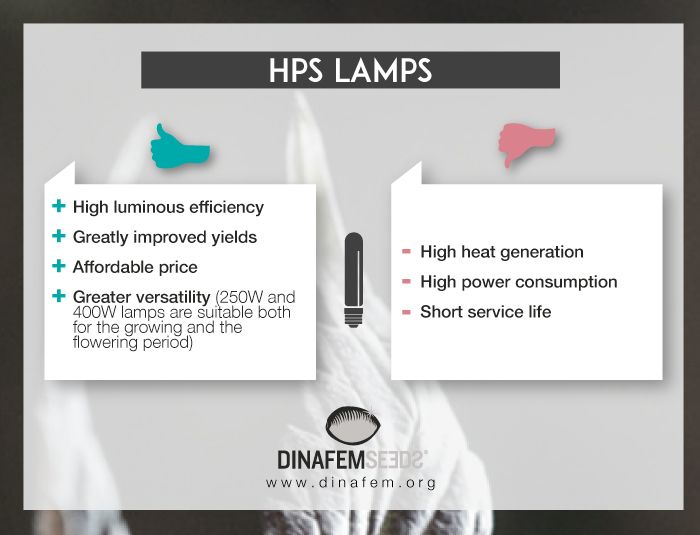
What is a CFL lamp?
CFL (Compact Fluorescent Light) lamps are energy-saving light bulbs also known as compact fluorescent lamps.
As you may well know, CLF lamps are simply industrial fluorescent tubes adapted for home use. Technically speaking, they are light generating fluorescent tubes whose size has been miniaturised through bending and rolling techniques.
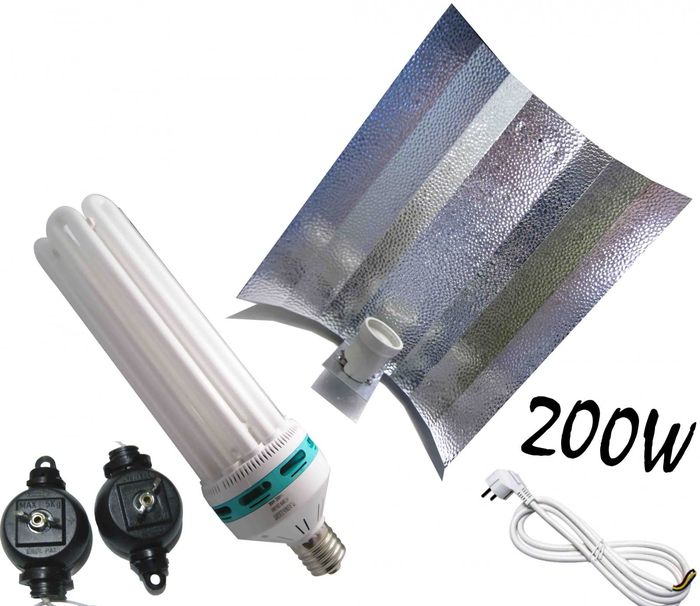
Fitted with a holder that ensures the passage of electricity and that houses the electronic ballast, CLF lamps have the same characteristics as longitudinal fluorescent tubes, with the exception that in most cases tubes cannot be replaced individually.
CFL lamps stem from the work of American engineer Peter Cooper Hewitt, inventor of low-pressure mercury lamps. The problem with these lamps was that they generated a bluish/greenish light that emitted UV rays harmful to the skin, and therefore they were confined to the industrial and photography sector. Years later, in 1926, Hans Spanner, Friedrich Meyer and Edmund Germer developed the technology we know today, i.e. a high-pressure mercury lamp lined with a fluorescent layer that turns the light white.
CFL lamps are perfect for the rooting of cuttings and for seedlings. Energy-saving and reasonably priced, they generate very little heat, which is particularly advantageous in small growing spaces. Plus, their service life is long - about 23,000 hours - if compared to other models available in the market.
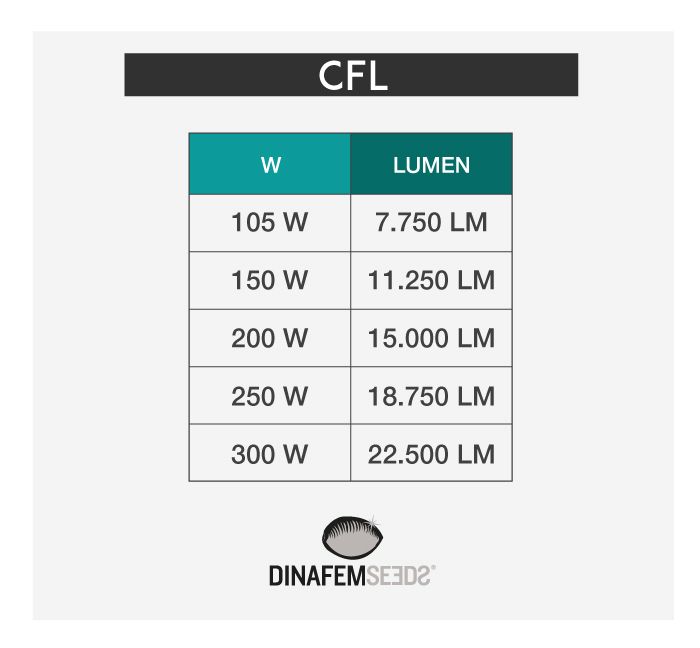
The drawback is that yields tend to be low, and thus the plants need to be placed very close to the lamp - the bigger the distance, the lower the luminous efficiency. Here are some things to consider when growing with CFL lamps:
• Place the plants, seedlings or cuttings at a maximum distance of 10-12 cm from the lamp.
• Considerably reduce watering. CFL lamps generate little heat and thus humidity levels are more stable, with virtually zero evaporation.
• Grow small plants only, otherwise results may not be as expected.
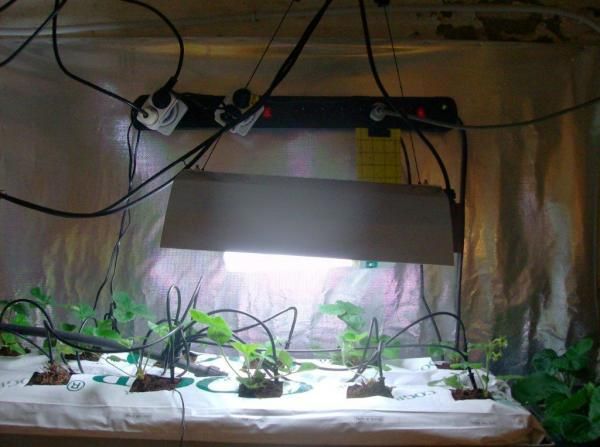
There are a number of models available, ranging from 25 to 300W, although the most popular and actually useful ones are 105W, 150W, 200W, 250W and 300W models. Some are even specific to the vegetative (whitish/bluish light) or to the flowering stage (reddish light).
For optimum results, CFL lamps should be changed every 18,000 hours of use, when they start to lose efficiency.
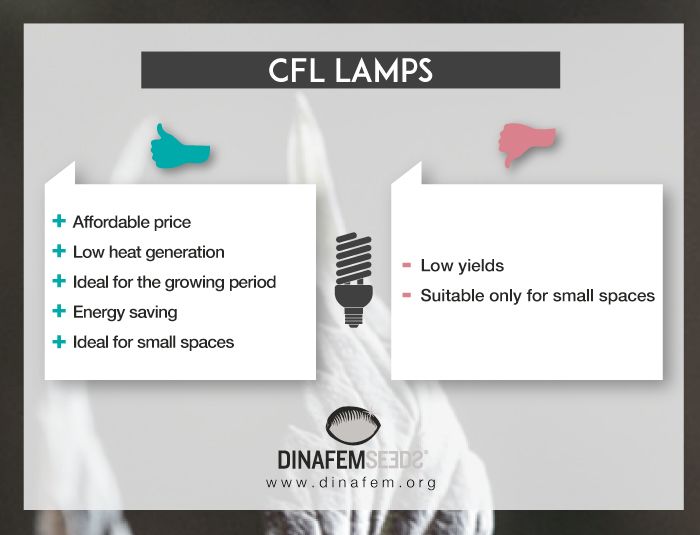
Now that you have a clearer idea of the differences between HPS and CFL lamps, it is time to enjoy your grow.



Comments from our readers
There are no comments yet. Would you like to be the first?
Leave a comment!Did you like this post?
Your opinion about our seeds is very important to us and can help other users a lot (your email address won't be made public).